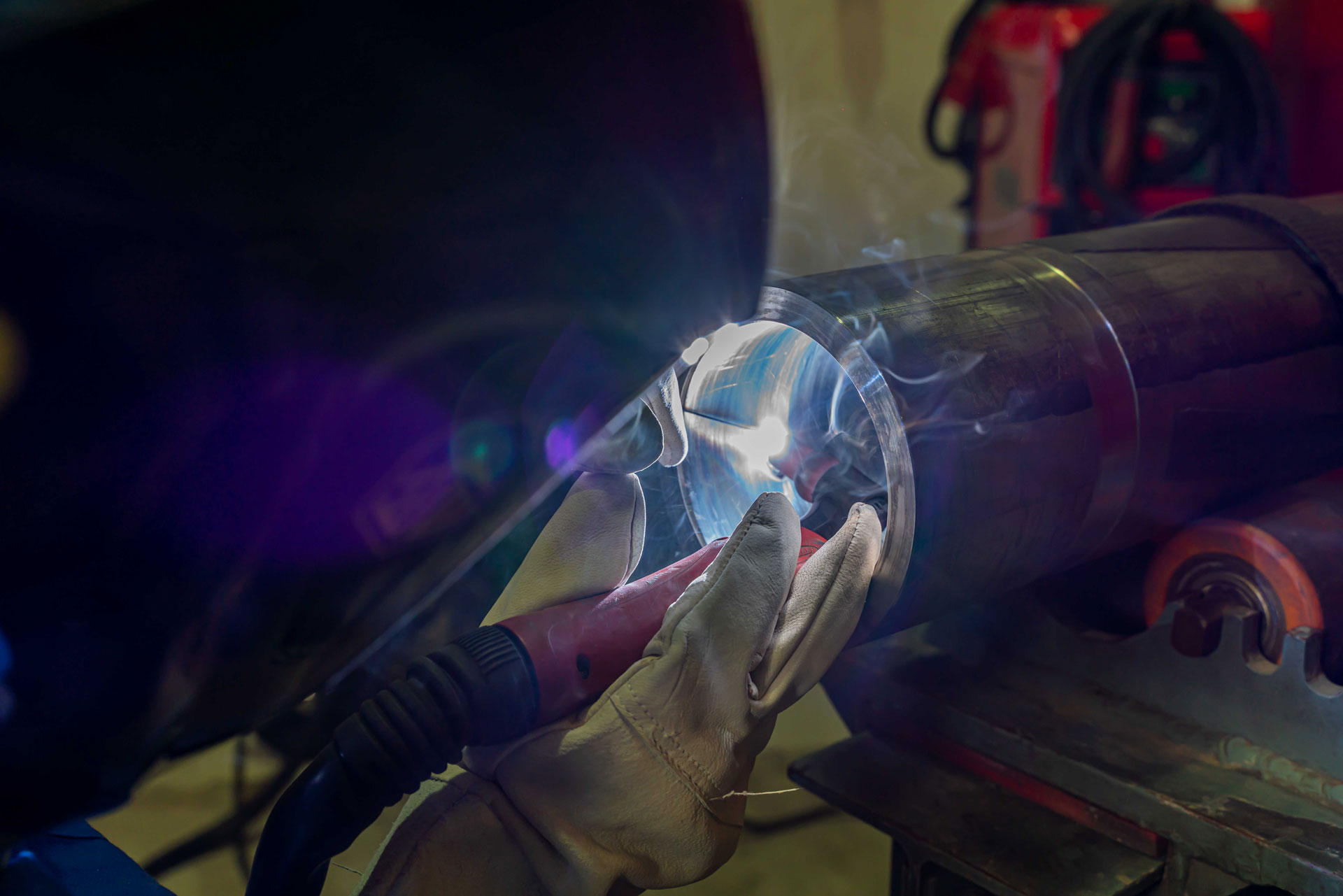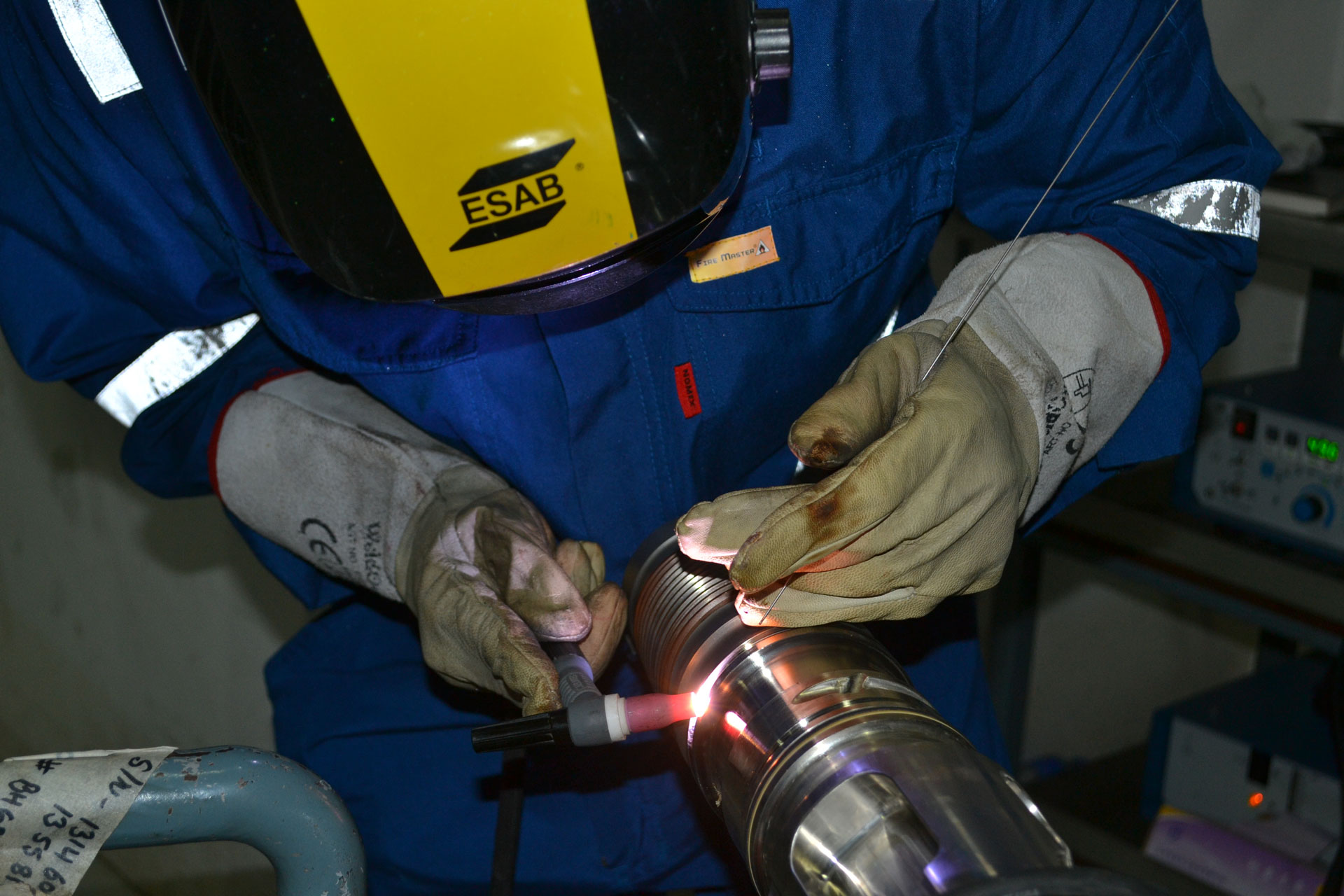Manual Welding (GTAW/GMAW/Micro TIG)
Manual OD/ID Cladding GTAW
After completing the welding process, clad material is welded over the joint using high alloy filler metals. The cladding is provided as corrosion resistant to the welded point or even the entire surface. It is sometimes as thin as 1.5 mm. During the TIG cladding process, high-energy impulse creates an explosive charge that drives together the surfaces of the metal to be bonded.
Manual OD Cladding GMAW (Gas Metal Arc Welding)
During the GMAW cladding process, corrosion-resistant alloy wires are fed across to a molten soup that is shielded with inert gas. During the process, the wire feed speed regulates the deposition rate. Any increase in the speed of the alloy wire results in creating more heat which helps the weld molten soup to penetrate deeper into the base metal. This allows the welder to create a corrosive-resistant material layer over the welded material to improve its corrosion resistance property.
Micro Tig welding
Micro TIG welding (micro tungsten inert gas), also known as a pulse arc welding process that uses a non-consumable tungsten electrode to produce an arc which creates the weld. It produces high-quality welds with minimal heat-affected zones by generating arcs between the workpiece and the tungsten electrode. Precision in micro-welding (TIG and plasma) from 0.1 to 80 amps. Very stable and soft arc, the soft arc will not damage small or delicate parts.



